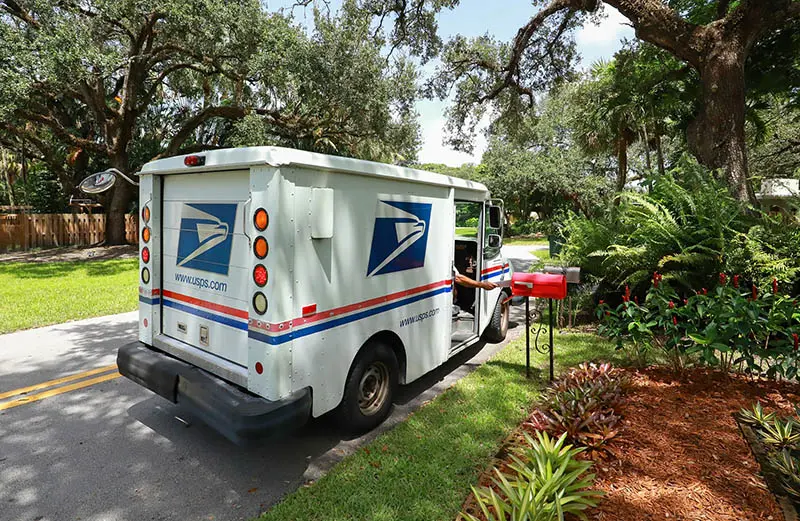Direct Mail campaigns can be a highly effective marketing channel for businesses to reach their target audience. However, it’s important to understand the costs involved in a campaign and the different components that make up those costs. Each component has its own cost structure, and comparing vendors based on a single component can lead to mistakes.
In this chapter, we will provide a breakdown of the costs involved in a Direct Mail campaign and discuss how to consider the totality of those costs. We will also explore the different components of a Direct Mail campaign, including lists, creative, printing, mailing, and digital integrations, and how each one contributes to the overall cost.
By understanding these costs and components, businesses can make informed decisions about their Direct Mail campaigns and ensure that they are getting the most out of their marketing budget.
Looking at the Totality of Direct Mail Costs
The best way to look at the costs of an upcoming campaign is to look at the totality of all the costs and sum them up to a single per-piece cost or total price, and review that figure with your cost per acquisition and Lifetime Value. A common mistake that businesses make when trying to determine how much direct mail costs is to compare vendors based on only one component (for example, comparing only the print cost between vendors). Better, then, to examine all the components together and compare that figure to the cost and lifetime value
Understanding the different components of a Direct Mail campaign, the ranges of their costs, and their relative weights to the overall totality of direct mail marketing costs is crucial for several reasons:
Budgeting
Every business operates within a budget, and it’s important to know where your money is going. By understanding the costs of each component (like design, printing, postage, etc.) and how they go together, you can more accurately predict the overall cost of the campaign and budget accordingly.
Return On Investment (ROI)
Understanding the totality of the costs of direct mail can help you assess the return on investment for your Direct Mail campaign. For instance, if you’re spending a lot on high-quality design but not getting a high response rate, you might want to reevaluate your strategy.
Strategic Decision-Making
Understanding the cost structure of a Direct Mail campaign can inform your strategic decisions. For instance, if a particular component is significantly more expensive but doesn’t contribute much to the campaign’s success, you may decide to cut or reduce it.
Performance Monitoring
By keeping track of costs, you can monitor the performance of your Direct Mail campaign over time. This will allow you to make necessary adjustments and improvements–focusing on one part of your mailing list, for example–ensuring that your campaign remains cost-effective and successful.
Scalability
Knowing the totality of the cost structure allows you to scale your direct mail efforts. If you see positive results and want to increase the volume of your Direct Mail campaign, understanding the costs involved will help you plan effectively.
As you can see, a detailed understanding of costs is key to planning, implementing, and evaluating a successful Direct Mail campaign. It enables effective resource allocation, strategic planning, and continuous improvement.
Context of Direct Mail in the Marketing Budget
Once you have a good grasp on the totality of your costs, taking into account the elements we’ll discuss below, you’ll want to consider that number in proportion to your overall marketing budget.
As we discussed in Chapter 1, there’s no hard-and-fast way to create a marketing budget, or even for allocating your direct mail advertising costs within that budget. Some businesses find that 15% of their overall marketing budget can deliver an optimal cost per customer acquisition. Other businesses may spend more, or less, on their direct mail marketing campaigns.
In any case, you’ll want to keep your campaign goals in mind as you budget. Your costs may be different from a retention campaign than from an acquisition campaign.
With that in mind, let’s look at each of the components of a Direct Mail campaign, bearing in mind that each one has ranges and relative weight to the overall costs.
Direct Mail Costs: Lists
How much direct mail lists cost will depend on the nature of the list. Most consumer lists run at $0.08 per name (for multiple-use) and $0.05 per name for single-use. This includes the basic demographic bundles like age, income, presence of children, etc. Specialty lists are more expensive, and also sometimes come with a minimum purchase amount. For example, a highly targeted list of known Back Pain Sufferers runs $0.30 for single-use with a $1,500 minimum, or $0.50 for multi-use with a $2,500 minimum.
For a complete range of different kinds of lists and prices, it’s quickest and easiest to discuss the campaign with a Direct Mail Expert. Often, a consumer list that smartly targets the right audience and locations might be just as effective as a specialty list, and more affordable.
Direct Mail Costs: Creative
Creative costs will depend on the kind of service that’s needed. At Modern Postcard, for example, If you have a graphic designer and need some help with checking files, or preparing the artwork to the proper specifications, there’s no charge.
Beyond that, there’s a range of services available – from designing to laying out the Direct Mail piece with your own content and information and all the way to copywriting, full design, and even marketing concepts and strategy.
Those creative services usually run $100 – $300 per hour, depending on the level of services. Usually, when you work with a Direct Marketing services business, there are some packages where creative fees can fold into the overall estimate. For example, with Modern MAX, we add a creative fee of $199, which includes everything from copy to design for the postcard and digital ads.
Direct Mail Costs: Printing
These costs range dramatically, based on the Direct Mail format that best fits the goals of the campaign and your cost-per-acquisition targets. A 12-page booklet catalog will have a different price than an oversized postcard.
In almost every campaign, the cost-per-piece of the printing will be a smaller percentage of the overall cost than the postage, so it’s important not to get hung up on the actual printing cost. Unless you’re mailing hundreds of thousands or millions of pieces, a one or two cents difference in print cost between vendors won’t materially affect the overall cost of the Direct Mail campaign.
Direct Mail Costs: Postage
The USPS® is the carrier of mail, and unless you are choosing EDDM (Every Door Direct Mail), postage fees are a necessary part of any campaign. And, postage fees will invariably be the component with the highest per-piece cost.
Postage fees range based on the postage type (First Class, Letter, Nonprofit, etc.), as well as if a list has tighter saturation (all going to a single Zip Code) or broader delivery (Nationwide). Working with a Direct Mail Expert helps you determine the best-fit postage strategy to make sure you get the lowest postage rates available.
Direct Mail Costs: Digital Integration
Adding a digital component to the Direct Mail campaign helps to more fully engage customers and increases the likelihood that they will respond to your offer. Adding email, social media, and display advertising to a Direct Mail program reinforces your brand message and helps each channel get more visibility. In addition, you give the customer the chance to respond as they want to.
Costs for Digital Integrations are relatively low, and may involve a set-up fee as well, depending on the program and what’s involved. Modern MAX helps with this digital integration approach because all of the services are bundled into a single price, which makes it easier to estimate costs and implement the campaign.
With all of these components, and with a range of variable options available within each, your direct mail marketing costs can vary. Working with a Direct Mail Expert can help you understand the nuances of your Direct Mail campaign costs, and how to get the most out of your marketing budget.
Estimate Performance and Return On Ad Spend

By Keith Goodman, VP Corporate Marketing & Sales




